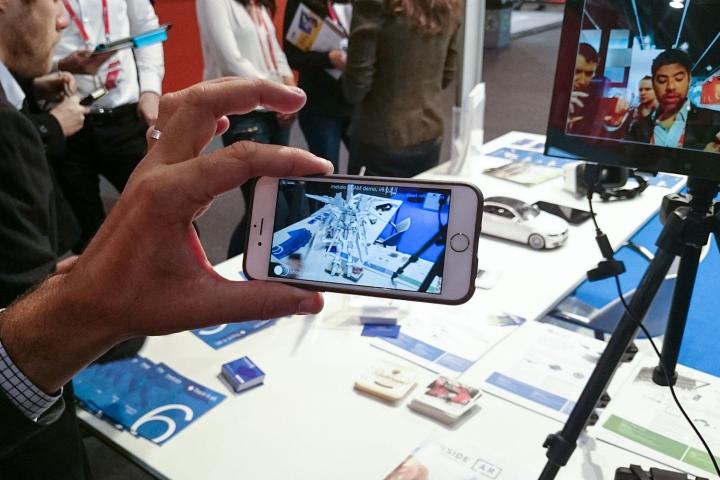
Company acquisitions are nothing new for Apple, so what makes this one stand out? It’s Metaio’s focus on augmented reality and what it calls, “computer vision.” Virtual reality is one of the hottest trends in tech at the moment, with Facebook, Microsoft, Samsung, HTC, and many others all ensuring they’re in at the beginning with some exciting products.
However, it’s Google’s growing ambitions that make the Metaio acquisition very timely. During its Google I/O keynote, the company showed off a revised version of its Cardboard VR viewer, explained how it’s building the VR ecosystem using YouTube, and then amazed us all with Jump — an open source rig that facilitates the creation of incredible 3D VR videos.
We tried out Metaio’s technology earlier this year, and saw how its augmented reality platform could turn ordinary objects into touchable, interactive toys. Viewing album artwork through an iPhone’s camera made each image a tappable button where the corresponding track would be automatically played, for example.
What could Apple be planning to use Metaio’s tech for? Rumours surrounding iOS 9 and beyond talk about an augmented reality view for Apple Maps, where nearby businesses show up on the map view, based on your exact location, and complete with key information that alters as you walk around. Named Browse Around Me, according to reports, the points of interest are based on preferences and even previous search history.
It’s unlikely much of Metaio’s expertise will be incorporated into iOS 9, given its release is only months away, but other rumours point to Apple Maps being the subject of frequent updates in the future, which could see major features added with iOS 9.1 or later. Whatever the case, it seems interest in augmented reality and VR will only continue to increase for the foreseeable future.



